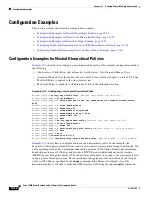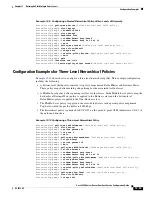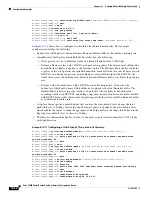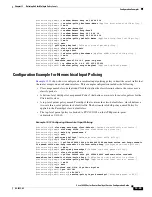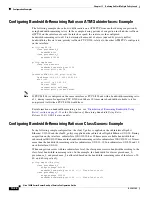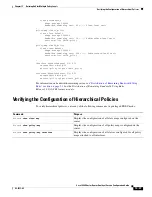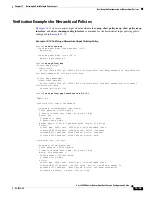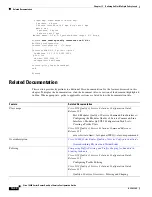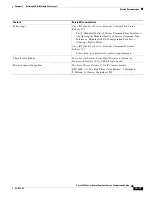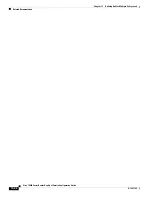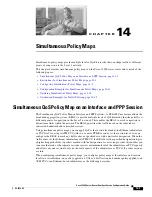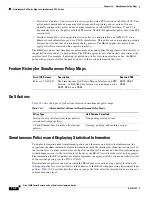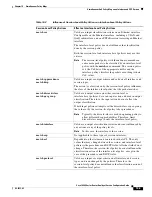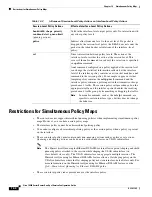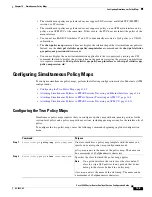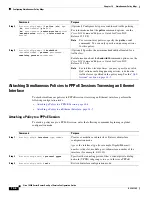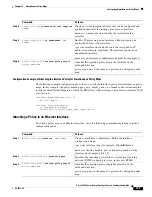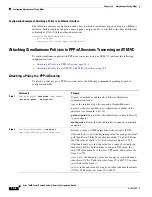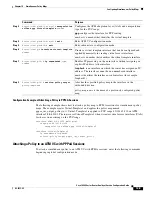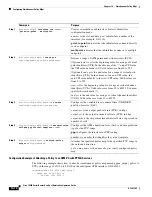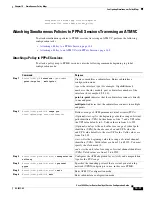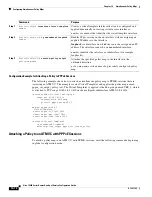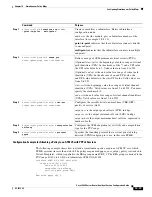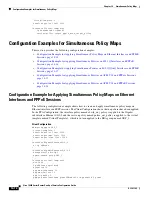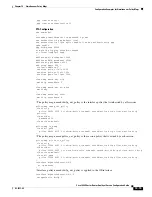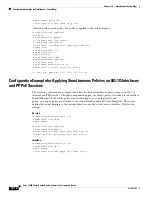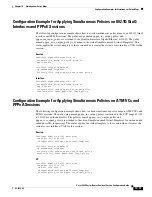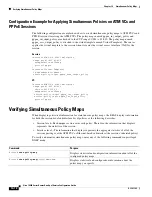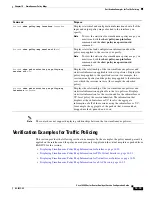
14-4
Cisco 10000 Series Router Quality of Service Configuration Guide
OL-7433-09
Chapter 14 Simultaneous Policy Maps
Restrictions for Simultaneous Policy Maps
Restrictions for Simultaneous Policy Maps
•
The router does not support hierarchical queuing policies when implementing simultaneous policy
maps. However, you can have nested policy maps.
•
The interface policy cannot be an hierarchical policing policy.
•
You cannot configure a hierarchical policing policy as the session policy when a policy is present
on the interface.
•
The session-level policy must contain only non-queueing actions such as police or set actions.
Queueing and shaping actions can be done in user-defined classes on VLAN subinterface.
Note
The Hierarchical Queueing for Ethernet DSLAMS feature allows a parent shaping and child
queueing policy attached to the session while shaping the VLAN subinterface (in
class-default class only). The VLAN subinterface can aggregate multiple sessions. The
Hierarchical Queueing for Ethernet DSLAMs feature allows a flat shaping policy on the
VLAN subinterface where the flat shaping policy must contain class-default class only. For
more information on the Hierarchical Queueing for Ethernet DSLAM feature, see the
QoS---Hierarchical Queueing for Ethernet DSLAMS
guide.
•
The session-level policy takes precedence over the interface policy.
bandwidth
,
shape
,
priority
,
random-detect
,
queue-limit
(queuing actions)
Valid in the interface-level output policy only. No interaction with
any other policy levels.
police
Indirect effect from one level to the next level. If a packet is
dropped by the session-level policy, the BRAS does not count the
packet in the token bucket calculations of the interface-level
policy.
set
Direct interaction between policy levels. The action at the
interface-level overrides the action at the session-level. This
occurs if the
set
command is used or if the set action is specified
in a
police
command.
A
set
command configured in a policy applied at the session level
can change the statistical information collected at the interface
level if the interface policy contains an action that matches a
set
command in the session policy. For example, suppose a virtual
template policy contains the
set ip prec 4
command and the
interface policy contains a policing action that transmits or drops
precedence 4 traffic. The session policy sets precedence 4 on the
appropriate traffic and the interface policy handles the resulting
precedence 4 traffic group by transmitting or dropping the traffic.
Note
Some
set
commands, such as the
set clp
command, are
specific to certain interface types, but this does not change
the behavior.
Table 14-2
Influence of Session-Level Policy Actions on Interface-Level Policy Actions
Session-Level Policy Actions
Effect on Interface-Level Policy Actions

